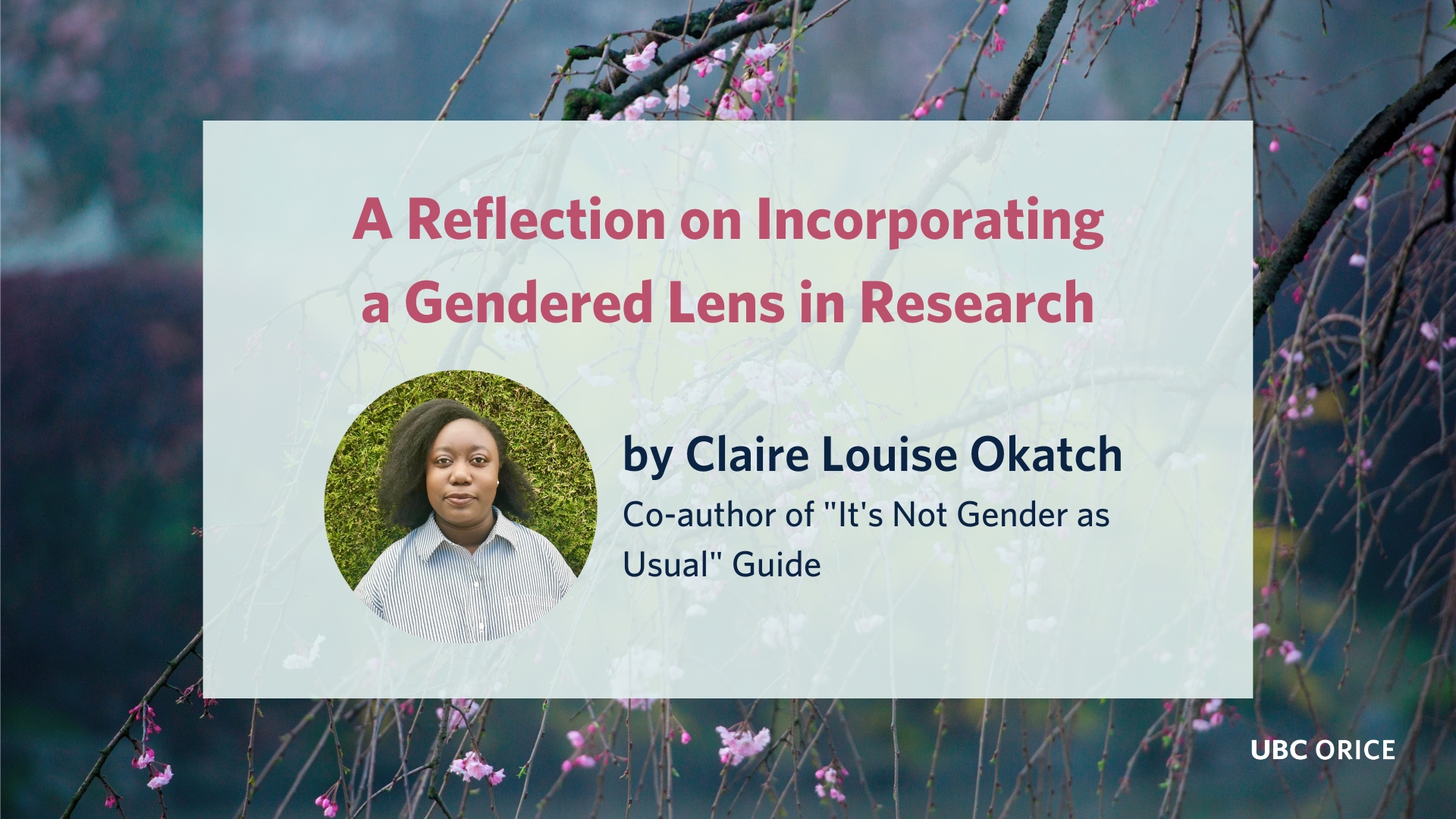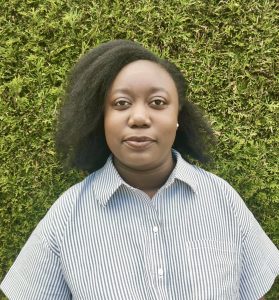
Claire Louise Okatch reflects on her motivations and experiences in creating the “It’s Not Gender as Usual” Guide. The guide is a resource for scholars to incorporate a gender lens in their work.
“The idea that gender considerations could apply regardless of the topic under study or that they could somehow be integrated into research processes was always met with goodwill but no concrete steps.”
Talking about gender can be exhausting and divisive. At least that was my experience as a young woman coming of age in Kenya. While on summer break after spending a semester learning about the impact of the gender wage gap, I remember arguing with a friend over whether it was an issue Kenyan women were contending with in the workforce. Instinctually, my experience of gender led me to believe that there probably was a gap even though I had no knowledge of the actual numbers. At the time, my friend looked at me in confusion and aptly stated that there was no such problem in Kenya. That indifference or lack of interest was something that I faced at various points in my academic career. The idea that gender considerations could apply regardless of the topic under study or that they could somehow be integrated into research processes was always met with goodwill but no concrete steps.
This is what inspired me to participate in writing the “It’s Not Gender as Usual” guide, a guide for scholars interested in incorporating a gender lens into their work. Our aim in crafting this was to disrupt the standard ways in which we think of gender considerations as only a research outcome as opposed to something that impacts every stage of the research process. It goes beyond simply thinking about how to integrate gender into a research respondent list, or to provide more inclusive language in collecting participant demographic data. Instead, our aim was to start from the basics. What do we mean by gender- do we all have the same understanding of the word? From there, how might gender affect how we come to research, how we conduct it, and ultimately how we take leave of it. This holistic way of thinking of gender prompted the research team to draw from our experiences in the classroom and outside of it in our personal work.
One of the very first things my co-authors and I had to contend with was how to even define gender. We both were aware of the varied relationships and understandings we had of the word. Mine felt visceral. For as long as I can remember, gender was simply a fence around what I was not allowed to do and how I needed to act. I remember wanting to just curl up and read books that took me into the mind of a neurosurgeon or a detective or even a Nobel Laureate. At those times, the term ‘gender’ was silent and unthreatening. But when I stepped out of my imagination, to my responsibilities as a first born girl who needed to take on a little more of the house chores, gender rocked my foundations. Naming and reflecting on feelings such as these was important for our definition process. It signified the ways in which our personal histories influenced both our understanding and articulation of gender.
“Naming and reflecting on feelings such as these was important for our definition process. It signified the ways in which our personal histories influenced both our understanding and articulation of gender.”
We eventually settled on a definition of gender that recognized the axis on which our various experiences seemed to rest; power. Power explains the ability of those who wield it, to declare a gender binary. It gives room to define the oppressed and the oppressor, or alternatively provides for the complexity that both those divisions are fluid and depend on positionality. It gives a nod to the layers of systemic historical significance that some factions of society have over others. Ultimately, it also offers the researcher a chance to take apart its layers by an inclusive research process and gives a chance for everyone involved in the research process to be conscious of both historical and present repercussions.
The guide is organized around different stages of the research process to capture this consideration of the whole process: it prompts us to consider who conducts the research and who may often be left out. A mapping exercise prompted by this understanding of gender asks us to widen the scope of traditional introductory processes to identify everyone who may contribute to the research in either academic conventional ways or those who may not. Other sections include ‘what and why’ which discusses coming up with a research question and the reasoning behind this and ‘how’ which discusses the data collection stage.
My favorite section closes out the guide; the ‘what now’ section. This section prompts users of the guide to go back to the big questions of the research’s potential implications and the stakeholders it may affect. It helps us connect our body of work to community needs and considerations we mapped out earlier. It also helps our research find its way to spaces like the conversation I had with my friend on the gender wage gap in Kenya in ways that are inclusive and show an understanding of context. It asks questions of power to better understand its potency and to be responsible about how we take leave of the research process.
Interested in working through the practical challenges of conducting gender+ intersectional research? Join the authors of the guide at the “What About Gender+? Intersectional Research Design in Practice Workshop” on Tuesday, November 22, 2022 from 12-1pm PT.
About the Author


Claire Louise is a recent graduate of the Masters of Public Policy & Global Affairs program at UBC. Claire’s engagement in Gender + was fostered by her experience at United World College of South East Asia and she has since then engaged in research, community organizing and other professional opportunities in this field. Examples of her research have included a study on sex desegregation in the tour guide in Zanzibar. Her work has primarily centered around the establishment of heritage networks in East & Southern Africa, the UAE and Asia. Outside of this, Claire Louise frequently volunteers as a mentor for youth groups most recently as a Lead Coordinator of the United World College Short Course in Moshi, Tanzania.


